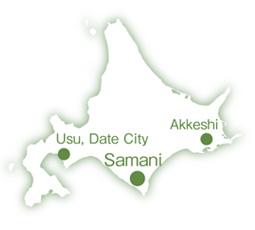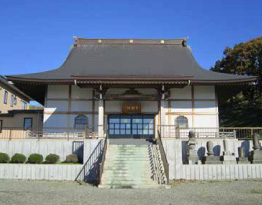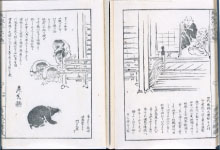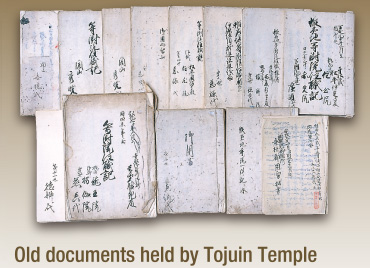4. Samani Mountain Path (Hokkaido's first "national highway") and Tojuin Temple - one of the Three Temples of Ezo
- Theme C:
Learning about and enjoying the symbiosis between humans and nature from history -
- 1. Hokkaido's original inhabitants came from the north
- 2. The hardships of the Ainu people and their restoration as an indigenous community
- 3. Prosperity brought to Hokkaido through distribution routes
- 4. Samani Mountain Path (Hokkaido's first national highway) and Tojuin Temple (one of the Three Temples of Ezo)
- 5.Living together with the sea
- ※Choose the desired content.

Construction of the Samani Mountain Path
Around 200 years ago, the security of Ezo and its surroundings were under threat from other countries, and particularly from Russia's southward expansion. The shogunate took control of eastern Ezo from the Matsumae clan in 1799 after conducting a survey on the region the previous year. It also implemented a plan to build two mountain paths in eastern Ezo: one was the Samani Mountain Path between Samani and Saruru across the Hidaka Mountains, and the other was the Saruru Mountain Path connecting Meguro and Shoya in Erimo Town. These two routes are seen as Hokkaido's first "national highways" because they were built by the governing Edo shogunate.


During the Edo period, a national isolation policy and the prohibition of Christianity underpinned the foundations of society. However, Japan began to open up to relations with other countries in the late 18th century. Tense relations developed between Ezo and other countries including Russia, which was suspected of spreading Christianity among Ainu inhabitants of the Kuril Islands. The shogunate government took this situation seriously, viewing it as a threat to national policy. Ezo in those days had no temples or monks to perform memorial services when people working away from home died in the region.
To provide spiritual support to the people of Ezo, the shogunate decided to build temples at three strategic points - Shamani (today's Samani Town), Usu (Usu Town in Date City) and Akkeshi (Akkeshi Town) - in eastern Ezo, which was still undeveloped. As a result, Tojuin Temple in Samani, Zenkoji Temple in Usu and Kokutaiji Temple in Akkeshi were completed in 1806. These are known as the Three Government Temples of Ezo.


Worshippers at Tojuin Temple

Higashi Ezo Nisshi (Eastern Ezo Diary) by Takeshiro Matsuura
The appearance of a bear at Tojuin Temple
Important Cultural Properties of Japan: June 9, 2005

- Documentation written by the 1st to 11th head priests describing exchanges primarily with the shogunate and other temples

- A box containing large Buddhist prayer beads and implements used for counting when monks and the faithful come together to invoke the Buddha a million times (hyakumanben).



